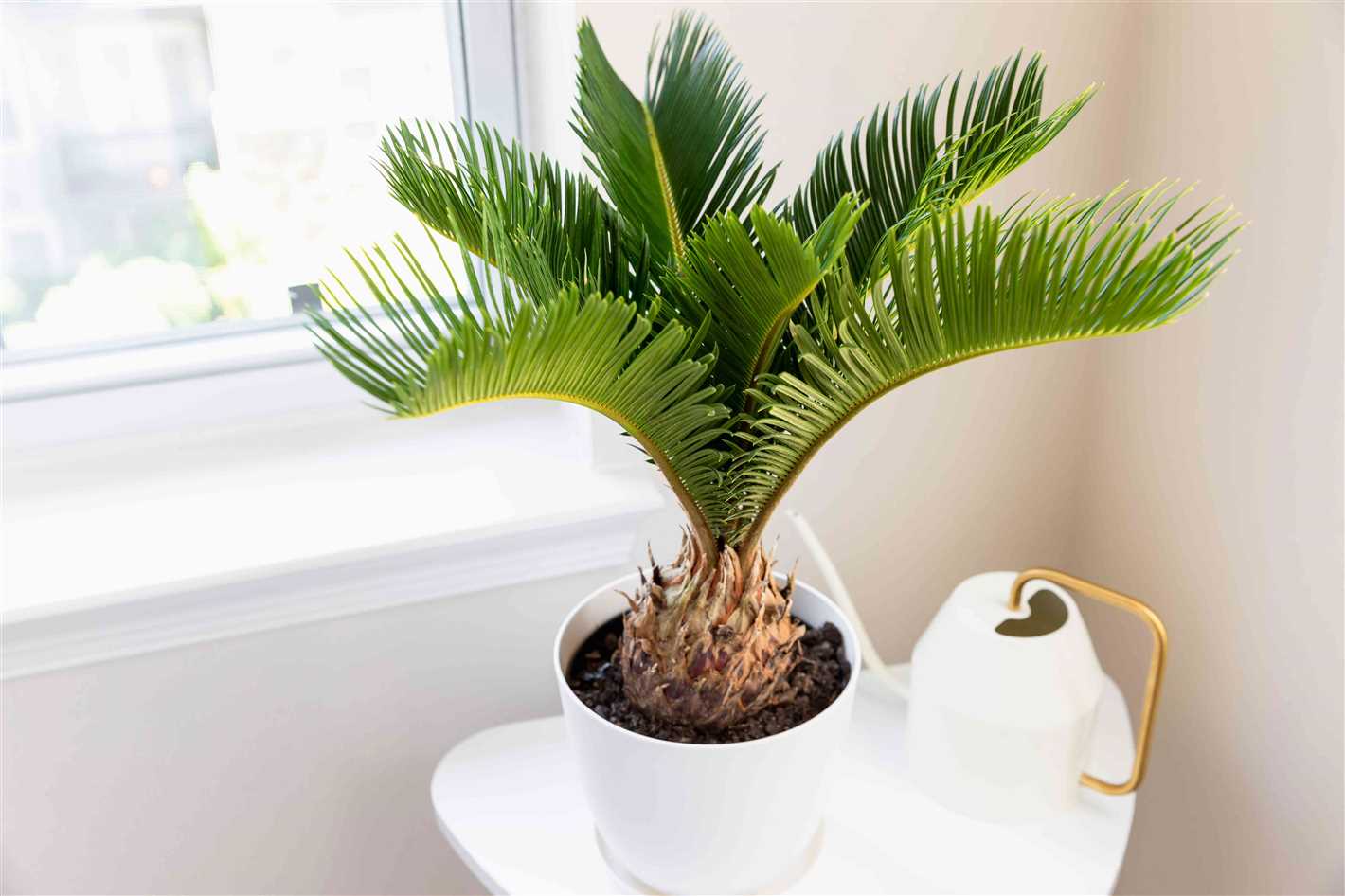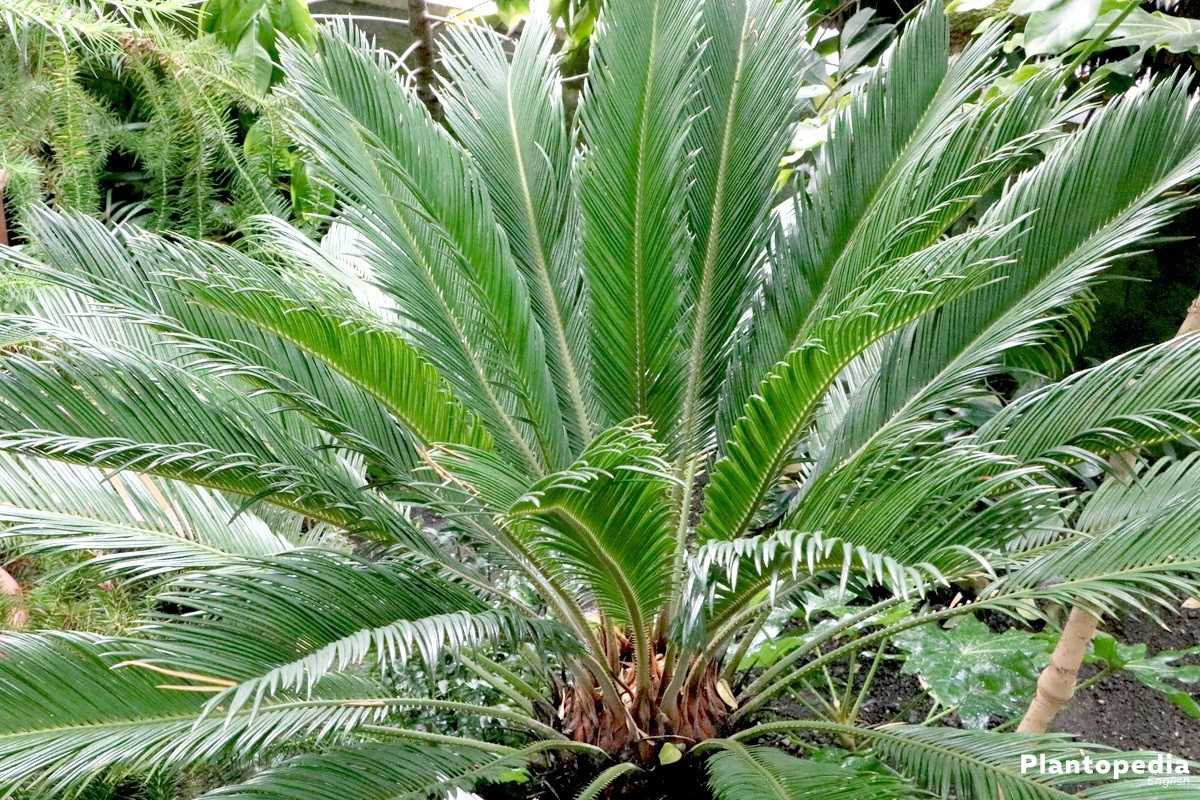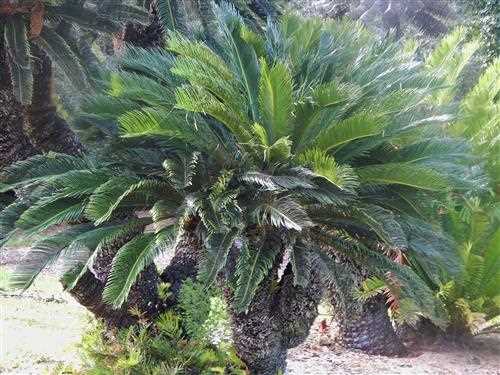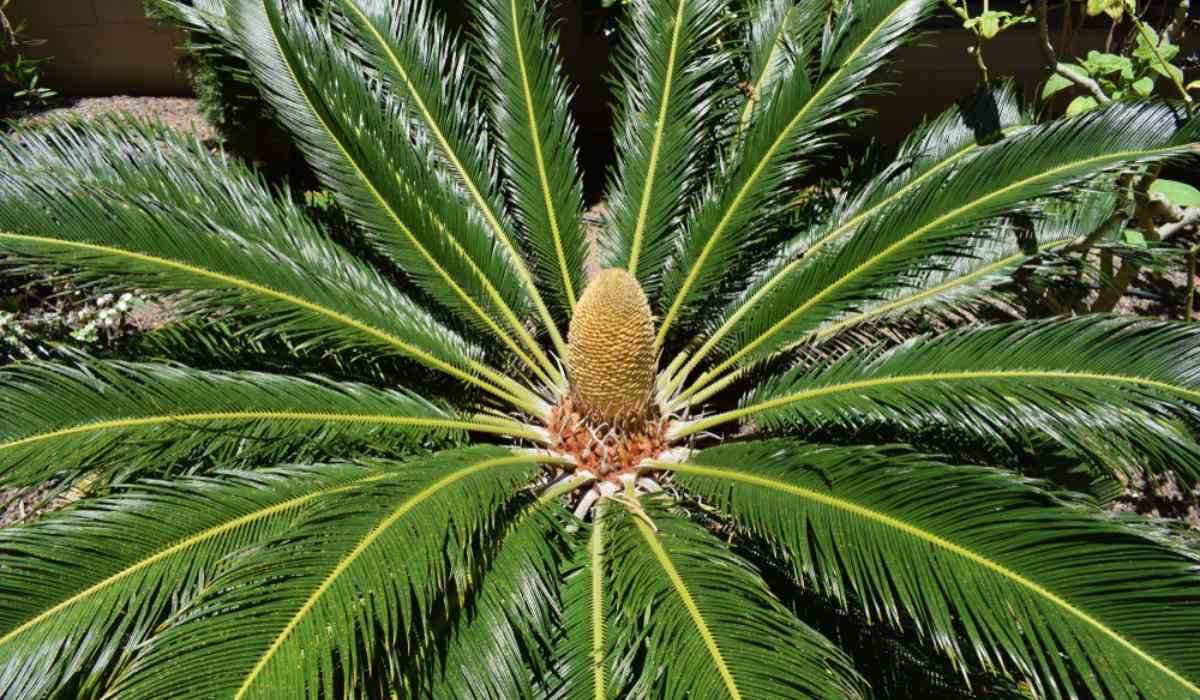- Cicas: Care at Home, Species and Varieties The Ultimate Guide
- Care at Home
- Species
- Varieties
- The Ultimate Guide
- Cicas Care at Home
- Introduction
- Light
- Watering
- Temperature and Humidity
- Soil and Fertilizer
- Pests and Diseases
- Conclusion
- Choosing the Right Cicas Species
- Dwarf Cicas (Cycas revoluta)
- Queen Sago (Cycas rumphii)
- Japanese Sago (Cycas revoluta)
- Conclusion
- Cicas Varieties for Indoor Gardening
- 1. Cicas revoluta
- 2. Cicas elephantipes
- 3. Cicas tenuis
- 4. Cicas rumphii
- 5. Cicas guizhouensis
- Proper Soil and Potting for Cicas
- 1. Well-Draining Soil
- 2. Sandy Loam Soil
- 3. pH Level
- 4. Organic Matter
- 5. Potting Mix
- 6. Repotting
- 7. Watering
- Watering and Humidity Needs for Cicas
- Watering
- Humidity
- Pruning and Maintenance of Cicas
- Pruning
- Maintenance
- Additional Tips
- Common Pests and Diseases of Cicas
- Pests
- Diseases
- Prevention and Management
- Q&A:
- What are the most common varieties of Cicas?
- How should I take care of my Cicas at home?
- Can I keep my Cicas outdoors?
- Are Cicas toxic to pets?
- How fast do Cicas grow?
- Video: Scindapsus Collection | My Favorite Plants
Welcome to the ultimate guide on Cicas, a popular houseplant known for its attractive foliage and easy care. Whether you are a beginner or an experienced plant enthusiast, this guide will provide you with all the information you need to successfully care for Cicas plants at home.
Cicas, also known as Cycas, are native to tropical and subtropical regions around the world. They are often grown as indoor plants due to their ability to tolerate low light conditions. With their feather-like leaves and ancient appearance, Cicas add a touch of elegance and exoticism to any space.
This guide will cover everything from the different species and varieties of Cicas plants to the ideal conditions and care requirements they need to thrive. We will also discuss common problems and pests that Cicas may encounter, as well as tips and tricks for keeping your Cicas healthy and happy.
Whether you are looking to add a Cicas plant to your indoor garden or want to expand your knowledge and skills in plant care, this guide is your go-to resource for all things Cicas. So let’s dive in and discover the wonderful world of Cicas plants!
Cicas: Care at Home, Species and Varieties The Ultimate Guide
Care at Home
Cicas, also known as cycads, are popular houseplants known for their attractive foliage and low maintenance requirements. Here are some tips for caring for cicas at home:
- Place your cica in a well-lit area, but away from direct sunlight.
- Water your cica sparingly, allowing the soil to dry out slightly between waterings.
- Use a well-draining soil mix specifically designed for cycads.
- Keep the humidity levels around your cica high by misting it regularly or placing a tray of water nearby.
- Fertilize your cica with a slow-release fertilizer formulated for cycads during the growing season.
- Remove any yellow or brown leaves to maintain the plant’s appearance.
- Repot your cica every 2-3 years to refresh the soil and provide more space for growth.
Species
There are numerous species of cicas, each with its own unique characteristics. Here are some popular species of cicas:
- Cycas revoluta: Also known as the Sago Palm, this species is one of the most commonly grown cicas for its attractive, feathery leaves.
- Encephalartos altensteinii: Native to South Africa, this species is known for its stiff, upright leaves and impressive size.
- Cycas rumphii: Native to Southeast Asia, this species has glossy, dark green leaves and a compact growth habit.
- Macrozamia communis: This species is native to Australia and features thick, leathery leaves and a slow growth rate.
Varieties
In addition to different species, cicas also come in various varieties that offer a range of leaf colors and shapes. Here are some popular cica varieties:
- Cycas revoluta ‘Spiralis’: This variety has twisted, spiral-like leaves, adding an interesting visual element to your indoor garden.
- Encephalartos horridus ‘Blue’: As the name suggests, this variety has beautiful blue-colored leaves that stand out among other cicas.
- Cycas micholitzii: This variety has long, arching fronds, giving it a more elegant and graceful appearance.
- Macrozamia moorei: With its silvery-green foliage, this variety adds a touch of uniqueness to any cica collection.
The Ultimate Guide
Whether you’re a beginner or an experienced plant enthusiast, this ultimate guide to cica care, species, and varieties will provide you with all the information you need to successfully grow and enjoy these fascinating plants at home.
From basic care tips and watering schedules to in-depth descriptions of different species and varieties, this guide will help you choose the right cica for your home and provide it with the best possible care.
Explore the world of cicas, discover their unique characteristics, and create an indoor oasis with these beautiful and hardy plants.
Cicas Care at Home
Introduction

Cicas are beautiful and exotic plants that can be a great addition to any home. While they may require a bit more care than some other houseplants, with the right knowledge and attention, they can thrive in a home environment.
Light
Cicas prefer bright, indirect light. Place your plant near a window where it can receive filtered light for a few hours each day. Avoid direct sunlight, as it can scorch the leaves. If you don’t have a bright spot, you can also use artificial grow lights to provide the necessary light.
Watering
Cicas are sensitive to overwatering, so it’s important to let the soil dry out slightly between waterings. Check the top inch of soil and only water when it feels dry. When watering, make sure to thoroughly saturate the soil, allowing the excess water to drain out of the pot. Avoid letting the plant sit in standing water, as this can lead to root rot.
During the winter months, when the growth slows down, you can reduce the frequency of watering. Be careful not to let the plant completely dry out though, as this can also be detrimental.
Temperature and Humidity
Cicas prefer temperatures between 65°F and 75°F (18°C and 24°C). Avoid placing your plant in drafts or near heating or cooling vents, as sudden temperature changes can shock the plant.
They also prefer moderately high humidity levels, so you may need to increase humidity around your plant. You can do this by placing a tray of water near the plant or using a humidifier.
Soil and Fertilizer
Cicas prefer well-draining soil. A mix of peat moss, perlite, and sand can be a good choice. Make sure the pot has drainage holes to prevent standing water.
Feed your cicas with a balanced, water-soluble fertilizer once every month during the growing season (spring and summer). During the winter months, you can reduce fertilizer application to every 2-3 months.
Pests and Diseases

Cicas are generally resilient to pests, but they can occasionally be troubled by mealybugs, scale insects, or spider mites. Regularly inspect your plant for signs of pests and treat them with an appropriate insecticide if necessary.
Common diseases that can affect cicas include root rot and leaf spot. These can often be prevented by providing proper watering and avoiding overwatering.
Conclusion
Caring for a cicas at home requires attention to light, water, temperature, and humidity. With the right care, these beautiful plants can bring a touch of the exotic to your home and thrive for many years.
Choosing the Right Cicas Species
When it comes to choosing the right species of Cicas for your home, there are several factors to consider. Each species has its own unique characteristics and requirements, so it’s important to do your research before making a decision.
Dwarf Cicas (Cycas revoluta)
- Dwarf Cicas, also known as Sago Palm, is one of the most popular species for indoor cultivation.
- They have a compact size, with a maximum height of three feet, making them suitable for smaller spaces.
- Dwarf Cicas have dark green, glossy leaves and a slow growth rate.
- They prefer bright indirect light and well-draining soil.
- However, it’s important to note that all parts of the plant are toxic to pets.
Queen Sago (Cycas rumphii)
- Queen Sago is a larger species of Cicas, growing up to six feet tall.
- They have dark green, feather-like leaves and a symmetrical growth habit.
- Queen Sago requires bright, indirect light and well-draining soil.
- They are moderately drought-tolerant and can thrive in outdoor gardens or as indoor plants.
- Similar to Dwarf Cicas, all parts of the plant are toxic to pets.
Japanese Sago (Cycas revoluta)
- Japanese Sago is a tropical species that can grow up to eight feet tall.
- They have dark green, glossy leaves that are finely divided.
- Japanese Sago requires bright, indirect light and well-draining soil.
- They are more tolerant of drought than other Cicas species.
- However, they are also toxic to pets, so caution should be taken.
Conclusion
Choosing the right Cicas species for your home depends on factors such as space availability, lighting conditions, and whether or not you have pets. Dwarf Cicas is a popular choice for smaller spaces, while Queen Sago and Japanese Sago are suitable for larger areas. Regardless of the species you choose, it’s important to provide proper care and attention to ensure their health and well-being.
Cicas Varieties for Indoor Gardening
If you are looking to add a touch of tropical beauty to your indoor garden, Cicas are an excellent choice. Known for their feather-like foliage and unique architectural shape, Cicas make stunning houseplants. Here are some popular Cicas varieties that thrive in indoor environments:
1. Cicas revoluta
This is one of the most common Cicas varieties found in indoor gardens. Also known as the Sago Palm, Cicas revoluta produces a crown of arching, dark green fronds that give it an elegant look. It is a slow-growing variety, making it perfect for smaller indoor spaces.
2. Cicas elephantipes
Also called the Ponytail Palm, Cicas elephantipes features a single, stout trunk that tapers towards the top and resembles an elephant’s foot. Its long, curly leaves give it a unique appearance, making it a popular choice for indoor gardening. This variety is low-maintenance and adapts well to different light conditions.
3. Cicas tenuis
Cicas tenuis, commonly known as the Thin Leaf Cicas, is a small variety that is ideal for compact indoor spaces. It has feather-like leaves that are thinner compared to other Cicas varieties, giving it a delicate and graceful look. This variety prefers bright indirect light and moderate watering.
4. Cicas rumphii
The Cicas rumphii, also known as Queen Sago Palm, is a popular choice for indoor gardening due to its striking appearance. It has dark green, glossy fronds that grow in a circular pattern, giving it a regal look. This variety prefers bright indirect light and well-drained soil.
5. Cicas guizhouensis
Cicas guizhouensis is a rare and unique variety that is highly sought after by indoor garden enthusiasts. It has thick, sturdy fronds that arch gracefully, creating a visually pleasing display. This variety prefers bright indirect light and a well-draining soil mix.
When selecting a Cicas variety for indoor gardening, consider factors such as light levels, space availability, and care requirements. With proper care and attention, Cicas can thrive and bring a touch of tropical elegance to your indoor space.
Proper Soil and Potting for Cicas
Choosing the right soil and potting mix is crucial for the health and growth of your Cica plants. Here are some guidelines to follow when selecting soil and potting mix for your Cicas:
1. Well-Draining Soil
Cicas prefer a well-draining soil mix to prevent waterlogged roots, which can lead to root rot. A good soil mix should allow excess water to drain through easily, while still retaining some moisture for the plant’s roots.
2. Sandy Loam Soil
A sandy loam soil mix is ideal for Cicas. It provides good drainage, yet retains enough moisture for the plant’s roots. It also allows air to circulate around the roots, promoting healthy growth.
3. pH Level
The pH level of the soil should be slightly acidic to neutral, with a range of 6 to 7. This ensures optimal nutrient absorption by the plant’s roots. You can test the pH level of the soil using a pH tester or by sending a sample to a soil testing laboratory.
4. Organic Matter
Adding organic matter to the soil mix can improve its structure and nutrient-holding capacity. You can incorporate compost, well-rotted manure, or peat moss into the soil to enhance its quality.
5. Potting Mix
When potting your Cicas, use a well-draining potting mix specifically designed for indoor plants or palms. These mixes usually contain a combination of peat moss, perlite, and vermiculite, which provide the right balance of moisture retention and drainage.
6. Repotting
Cicas prefer to be slightly root-bound, so they don’t require frequent repotting. Repotting every 2-3 years or when the roots outgrow the pot is sufficient. When repotting, use a slightly larger pot and fresh potting mix to provide ample space for root growth.
7. Watering
Proper watering is essential for Cicas. Water the plant thoroughly when the top inch of the soil feels dry to the touch, but avoid overwatering. Always ensure that excess water drains out of the pot to prevent waterlogged roots.
By selecting the right soil and potting mix for your Cicas and following proper watering techniques, you can help ensure the long-term health and vitality of your plants.
Watering and Humidity Needs for Cicas
Cicas, also known as cycads, have specific watering and humidity needs that are important to maintain their health and well-being. Here are some guidelines for watering and providing the right humidity levels for your cica plant:
Watering
- Water your cica plant thoroughly when the top inch of soil feels dry to the touch. This will ensure that the roots receive enough moisture.
- Avoid overwatering, as it can lead to root rot. Allow the soil to dry out slightly between waterings.
- During the growing season, increase the frequency of watering to keep the soil consistently moist.
- Use room temperature water to avoid shocking the roots.
- Ensure proper drainage by using a well-draining potting mix and a pot with drainage holes.
Humidity
Cicas prefer a moderate to high level of humidity, which mimics their natural tropical habitat. Here are some ways to increase humidity for your cica plant:
- Place a tray of water near the cica plant. As the water evaporates, it will increase the humidity around the plant.
- Mist the leaves of the cica plant regularly with water to provide some moisture in the air.
- Grouping cica plants together can create a microclimate with higher humidity levels.
- Consider using a humidifier in the room where the cica plant is located, especially during drier winter months.
By following these watering and humidity guidelines, you can help ensure that your cica plant thrives and remains healthy in your home environment.
Pruning and Maintenance of Cicas
Pruning
- Pruning is an essential part of maintaining the health and aesthetics of cicas.
- Remove any dead or damaged fronds using a sharp pair of pruning shears.
- When pruning, make sure to cut the frond at the base without damaging the main stem.
- Pruning can be done throughout the year as needed, although it is best to avoid pruning during the winter months.
Maintenance
- Cicas require a moderate amount of care to thrive in a home environment.
- Make sure to place your cica in a well-lit area, but avoid direct sunlight as it can scorch the leaves.
- Water your cica regularly, keeping the soil moist but not waterlogged. Allow the top few inches of soil to dry out before watering again.
- During the growing season, fertilize your cica once a month with a balanced, slow-release fertilizer.
- Monitor your cica for any signs of pests or diseases, such as scale insects or fungal infections. Treat any issues promptly to prevent further damage.
Additional Tips
Here are a few additional tips to help you maintain your cicas:
- Keep your cica away from drafts and cold temperatures, as they prefer warm and humid conditions.
- To enhance humidity levels, you can mist the leaves of your cica with water or keep a tray of water nearby.
- Rotate your cica occasionally to ensure all sides receive equal sunlight and growth is even.
- If your cica outgrows its pot, repot it into a larger container with fresh, well-draining soil.
- Regularly check the drainage holes of your pot to prevent water from pooling and causing root rot.
Common Pests and Diseases of Cicas
Pests

- Aphids: These small insects feed on the sap of the cica plant, causing wilting and yellowing of leaves. They can be controlled by spraying the plant with an insecticidal soap or by introducing natural predators like ladybugs.
- Scale insects: Scale insects are common pests that attach themselves to the leaves and stems of cicas, sucking sap and causing yellowing and wilting. They can be treated by wiping the affected areas with a cotton swab dipped in rubbing alcohol.
- Spider mites: Spider mites are tiny, spider-like creatures that can infest cicas and cause yellowing and mottled leaves. They can be controlled by spraying the plant with a solution of water and dish soap.
- Mealybugs: Mealybugs are soft-bodied insects that suck the sap from cica plants, causing leaf discoloration and stunted growth. They can be treated by dabbing affected areas with an alcohol-soaked cotton swab or by spraying with insecticidal soap.
Diseases

- Root rot: Excessive watering or poor drainage can lead to root rot in cicas. The roots become mushy and black, and the plant may wilt or die. To prevent root rot, ensure the plant is in well-draining soil and avoid overwatering.
- Leaf spot: Leaf spot is a fungal disease that causes dark, water-soaked spots on the leaves of cicas. The spots may grow and merge, causing the leaves to turn yellow and drop prematurely. To prevent leaf spot, avoid overhead watering and remove infected leaves.
- Crown rot: Crown rot is a fungal disease that affects the base of cica plants, causing decay and death. It is often caused by overwatering or poor drainage. To prevent crown rot, ensure the plant is in well-draining soil and avoid overwatering.
- Mosaic virus: Mosaic virus causes yellowing and mottling of the leaves in cicas. There is no cure for mosaic virus, so infected plants should be removed to prevent the spread of the disease to other plants.
Prevention and Management
To prevent pests and diseases in cicas, it is important to provide the proper care and maintenance. Here are some tips:
- Choose a healthy plant from a reputable source.
- Provide proper watering, ensuring the soil drains well.
- Avoid over-fertilizing, as this can make the plant more susceptible to pests and diseases.
- Inspect the plant regularly for signs of pests or diseases.
- Prune dead or infected leaves and dispose of them properly.
- Use organic or chemical treatments as necessary, following the instructions carefully.
- Monitor the plant’s health and seek professional help if needed.
| Pests | Diseases |
|---|---|
| Aphids | Root rot |
| Scale insects | Leaf spot |
| Spider mites | Crown rot |
| Mealybugs | Mosaic virus |
Q&A:
What are the most common varieties of Cicas?
The most common varieties of Cicas include Cycas revoluta (Sago palm), Cycas thouarsii, and Cycas circinalis.
How should I take care of my Cicas at home?
To take care of your Cicas at home, make sure they are placed in a well-lit area but away from direct sunlight. Water them sparingly, keeping the soil moist but not soggy. Feed the plants with a balanced fertilizer during the growing season. Trim off any dead or yellowing leaves and regularly dust the leaves to keep them clean.
Can I keep my Cicas outdoors?
Yes, Cicas can be kept outdoors if the temperatures are consistently warm, ideally ranging between 70-85°F (21-29°C). They can tolerate some direct sunlight but may need protection during the hottest parts of the day.
Are Cicas toxic to pets?
Yes, Cicas are toxic to pets, including cats and dogs. Their leaves contain toxins that can cause gastrointestinal issues if ingested. It is recommended to keep Cicas out of reach of pets or opt for pet-safe plants.
How fast do Cicas grow?
Cicas are slow-growing plants, and their growth rate depends on various factors, including environmental conditions. On average, they can grow around 1-2 inches (2.5-5 cm) per year.
Video:
Scindapsus Collection | My Favorite Plants
https://youtube.com/watch?v=JAi7rqd8pTs







